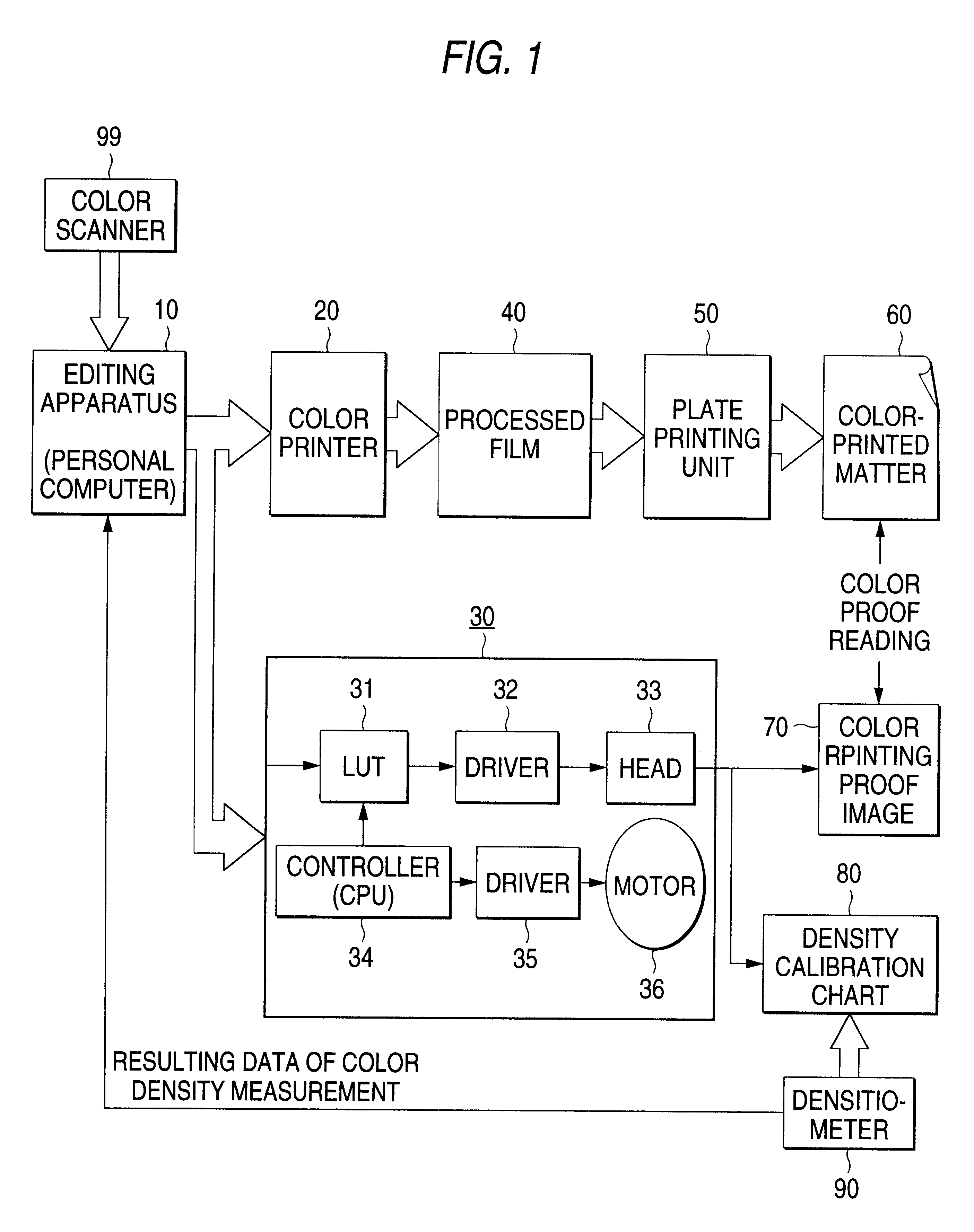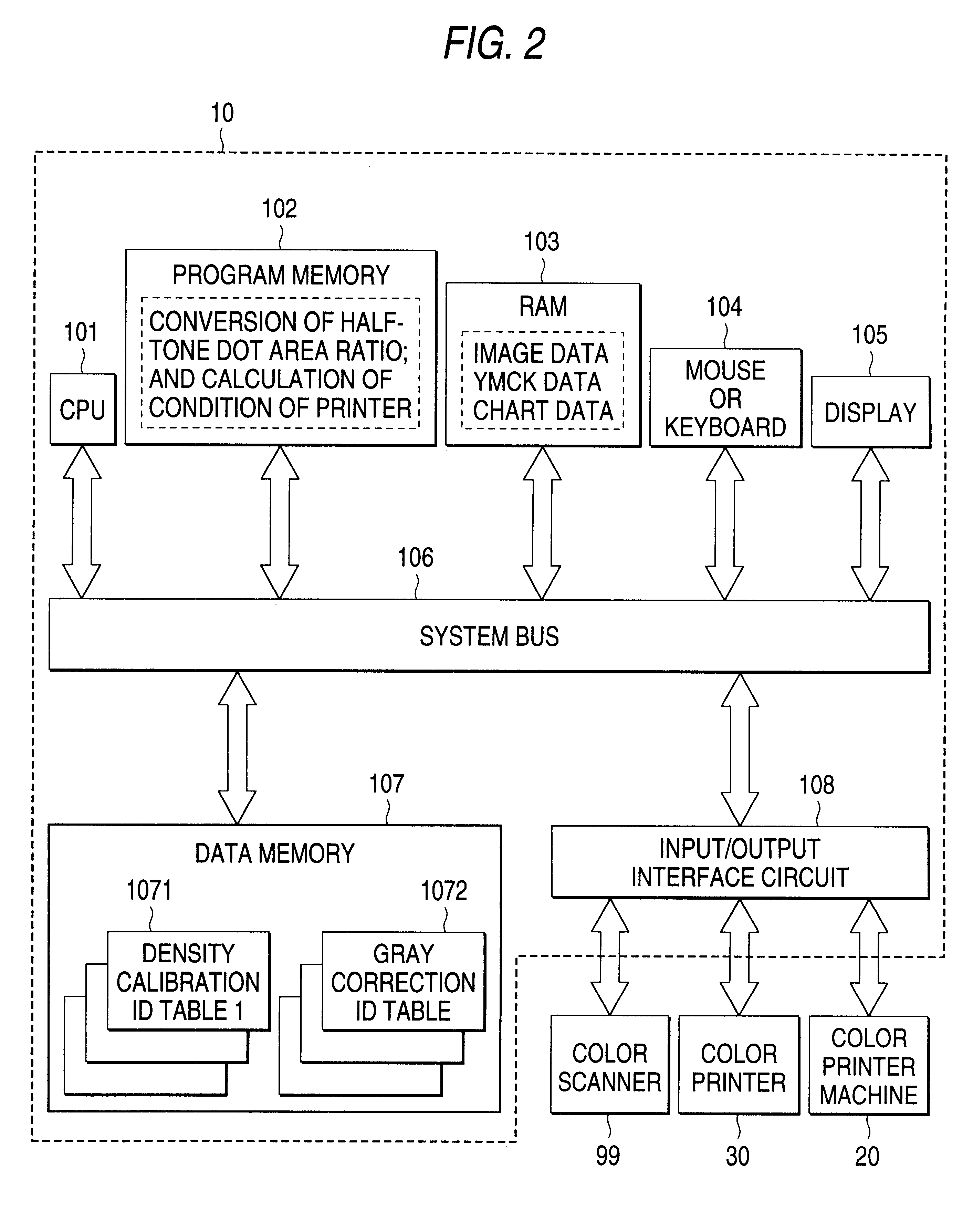Color converting method, density-gradient correction method and color printer using the same
a color printer and density gradient technology, applied in the field of color conversion methods and density gradient correction methods of printers, can solve the problems of insufficient margin for continuously reproducing the gradient in secondary or higher colors, user incorrectly determining that original data has an error, and inability to check
- Summary
- Abstract
- Description
- Claims
- Application Information
AI Technical Summary
Benefits of technology
Problems solved by technology
Method used
Image
Examples
Embodiment Construction
Condition
Printer: Digital Color Proof FIRST PROOF Printer manufactured by Fuji Film
Laminator: Digital Color Proof FIRST PROOF Laminator manufactured by Fuji Film
Receiving Sheet: Receiver Sheet A3W for Digital Color Proof FIRST PROOF manufactured by Fuji Photo Film Co., Ltd.
Thermal Transfer Ribbon: Proof Ribbon Adjacent for Digital Color Proof FIRST PROOF manufactured by Fuji Photo Film Co., Ltd.
Main Paper: Tokubishi Art Paper
The receiving sheet and the thermal transfer ribbon were those for the thin-layer thermal transfer process. The material adapted to the foregoing method incorporates a coloring material layer having a thickness of 1 .mu.m or smaller, preferably about 0.3 .mu.m or smaller. Since the thickness is very small, a higher resolution can be obtained as compared with the other thermal transfer method. Therefore, fine dots can stably be formed.
Other purposes, as well as the thermal transfer method, the method according to the present invention is effective for electronic ...
PUM
| Property | Measurement | Unit |
|---|---|---|
| thickness | aaaaa | aaaaa |
| thickness | aaaaa | aaaaa |
| energy | aaaaa | aaaaa |
Abstract
Description
Claims
Application Information
 Login to View More
Login to View More - R&D
- Intellectual Property
- Life Sciences
- Materials
- Tech Scout
- Unparalleled Data Quality
- Higher Quality Content
- 60% Fewer Hallucinations
Browse by: Latest US Patents, China's latest patents, Technical Efficacy Thesaurus, Application Domain, Technology Topic, Popular Technical Reports.
© 2025 PatSnap. All rights reserved.Legal|Privacy policy|Modern Slavery Act Transparency Statement|Sitemap|About US| Contact US: help@patsnap.com



